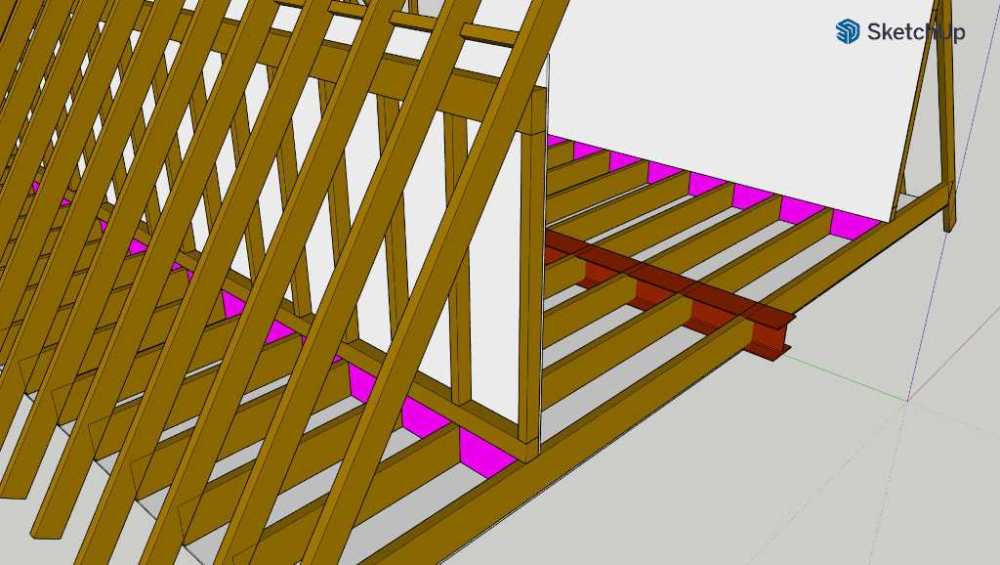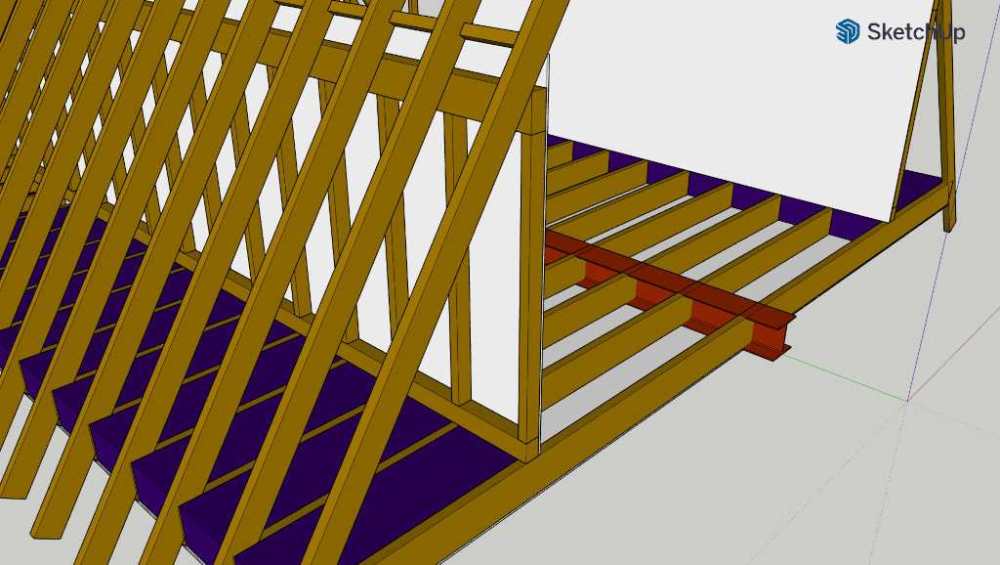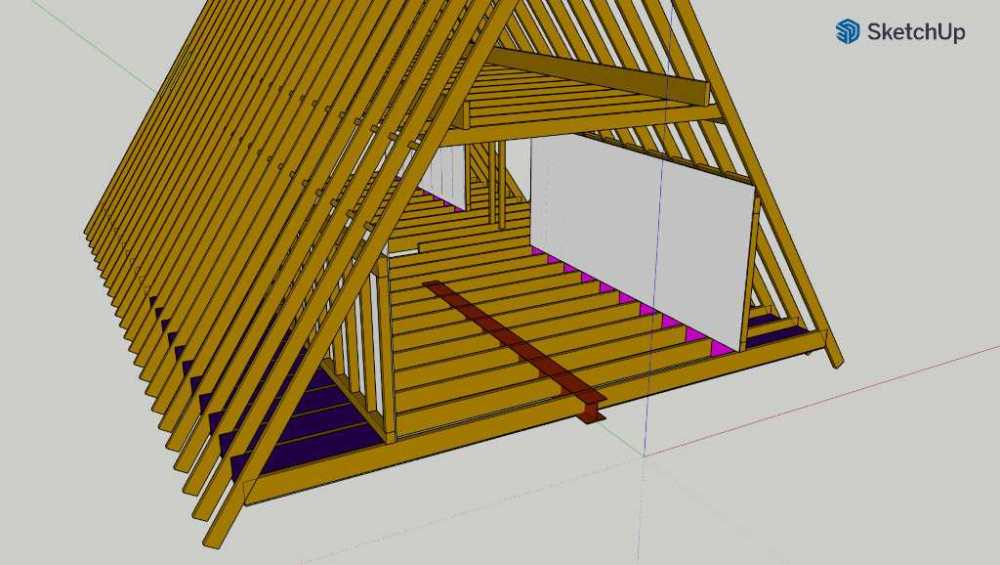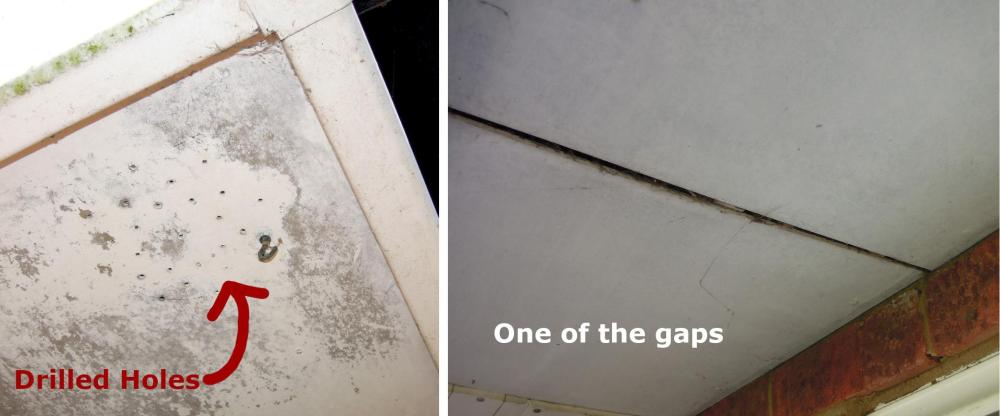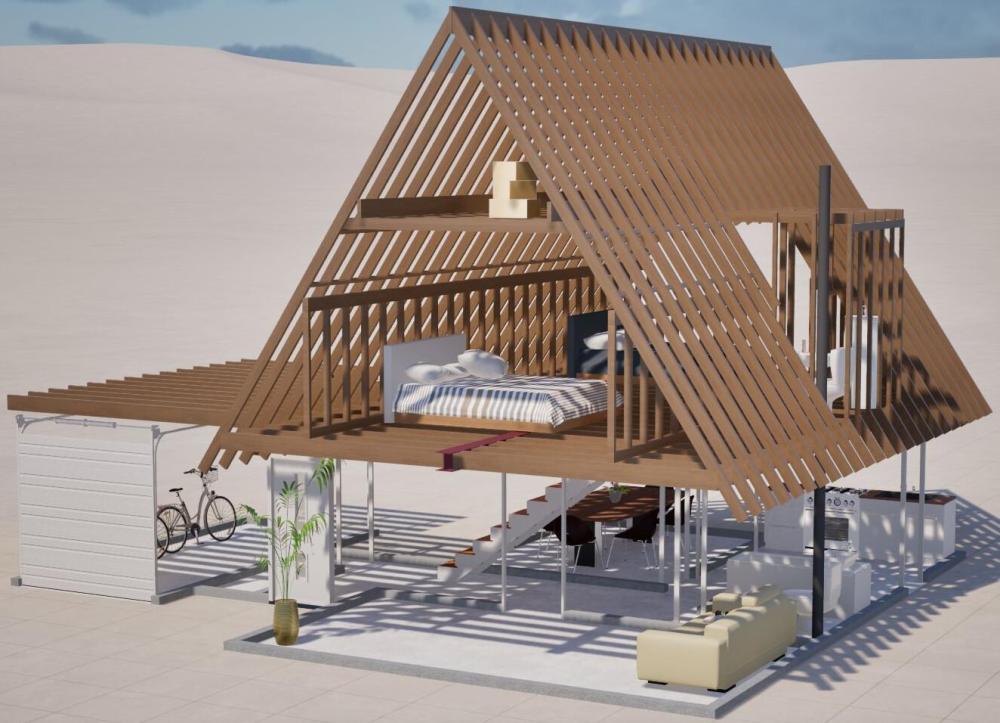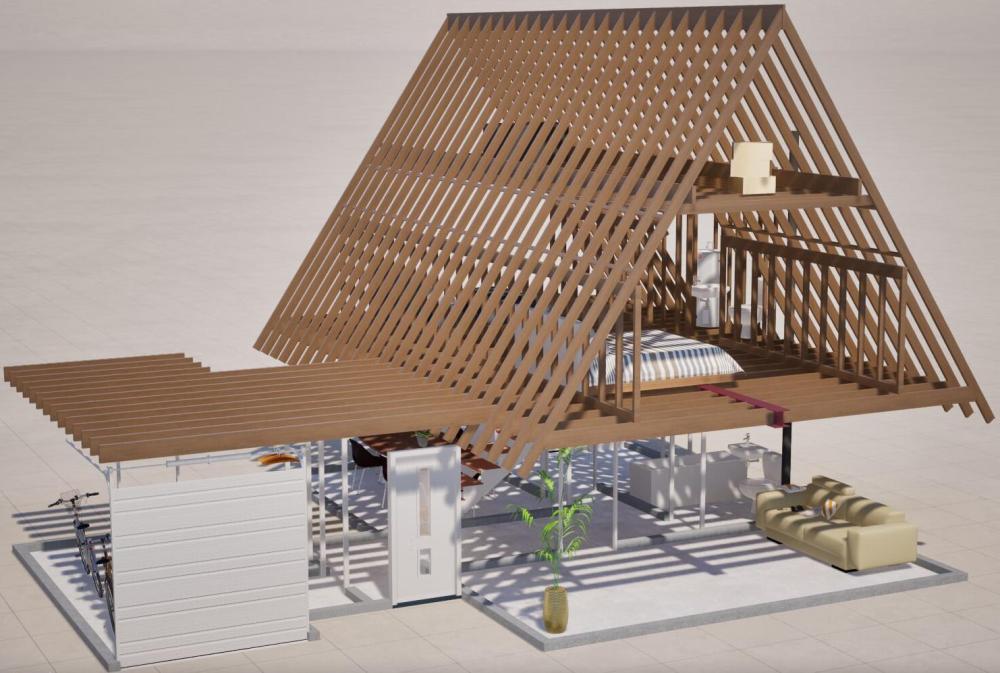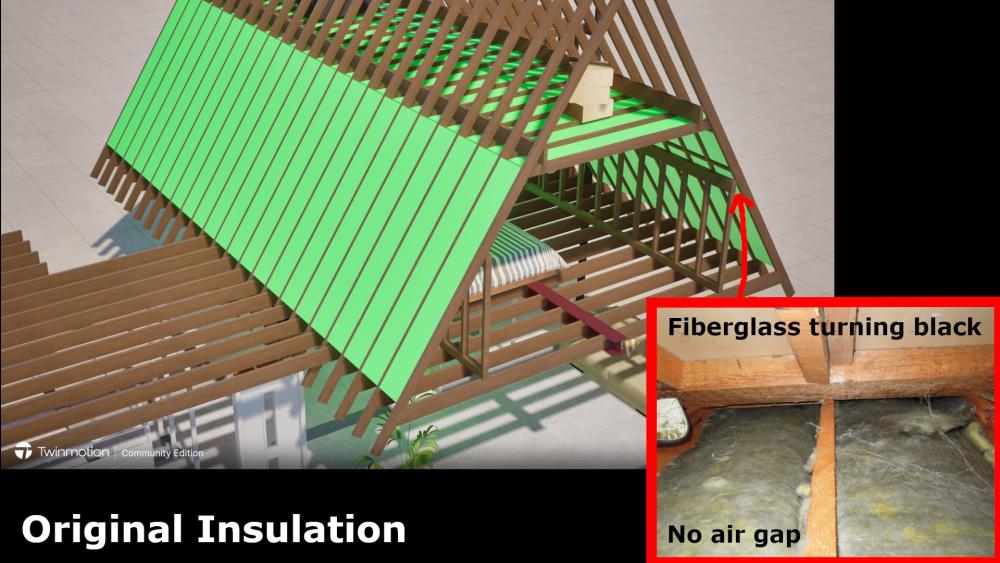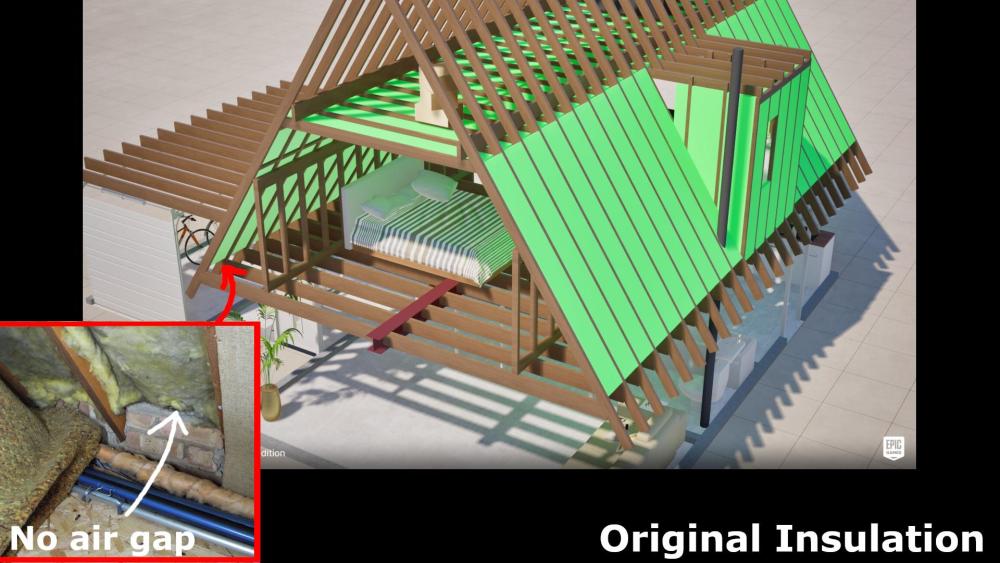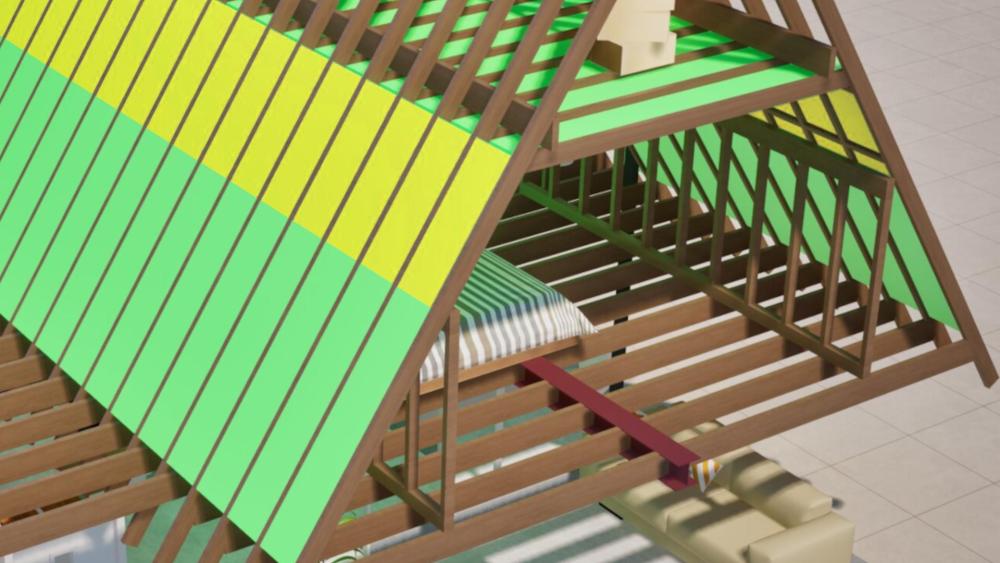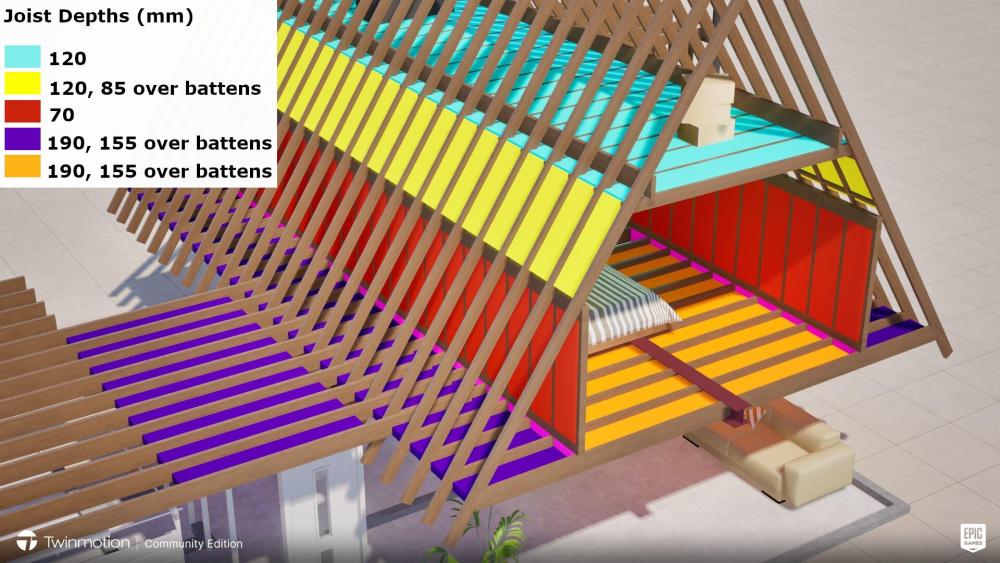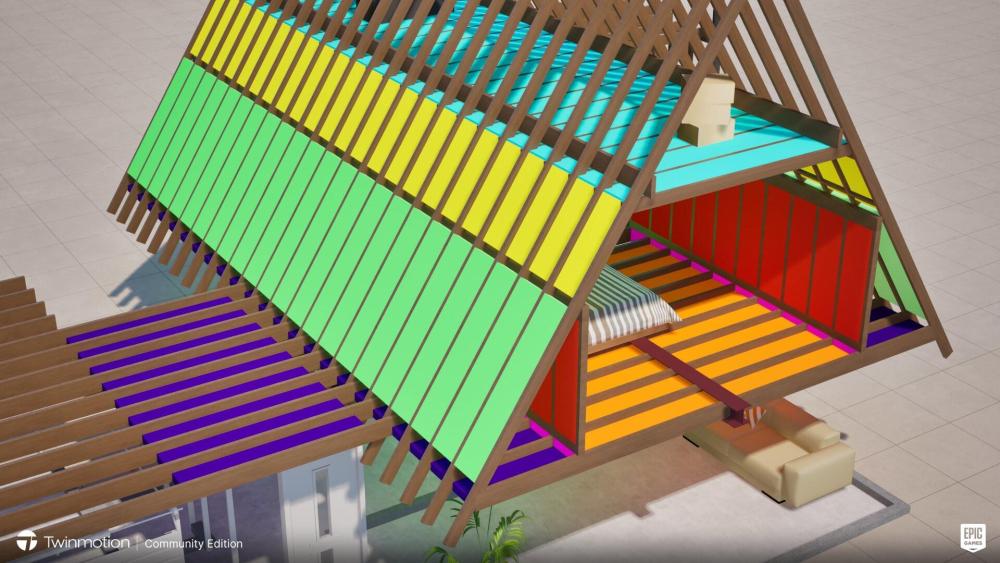
TheTeaBoy
Members-
Posts
6 -
Joined
-
Last visited
Personal Information
-
Location
UK
TheTeaBoy's Achievements

New Member (2/5)
0
Reputation
-
Hello, I am currently installing insulation in the pink and purple areas to the upstairs of my parent’s chalet bungalow. I’m doing this while avoiding any destruction that would result in re-decorating. The pink area is to plug the floor void at both ends for three reasons: 1. Stop drafts that that make the upstairs floor cold during winter 2. Stop drafts coming through the downstairs light fittings 3. Direct the heat from downstairs to the upstairs rooms instead of losing it to the triangular crawl spaces either side of the house. The upstairs rooms have either laminate or vinyl flooring and I am concerned that if I use foil faced PIR in the pink area it may trap moisture in the floor void particularly above the kitchen and bathroom, which is downstairs, neither of which have extractor fans. The purple area will be some type of roll insulation. If I stuffed the end of this into the pink area instead of using PIR would this better allow moisture to escape into the ventilated triangular crawl space while retaining heat in the floor void? Thank you for any help.
-
Parent's chalet bungalow - insulation plan.
TheTeaBoy replied to TheTeaBoy's topic in Heat Insulation
My dad drilled some holes into the soffits and there are also some gaps that let in air. I can see the cobwebs moving inside the crawlspace so I know there's airflow making its way in. Also in certain weather I feel a draft coming from the crawlspace hatch doors. On one side of the house the crawl space has central heating pipes, if that makes any difference? I can't see the soffit from the crawlspace because there are bricks built up to the roofing felt. As for the loft I see no obvious ventilation, however at the front of the house there are tiles on the wall from the first floor to the top of the house. I'm not entirely sure if the tiles are up against the breeze-block and so offer some ventilation? The house has been in its current state regarding insulation since the 70s. I can't see any issues with rotten floor of roofing joists unless I'm looking in the wrong places. If I add more insulation will ventilation become more critical? Struggle in terms of installing the insulation, or with experiencing any noticeable benefit? I think I'll be okay with installing it. Well they're both in their 70s now and I'm quite sure the property won't see a change to the heating system in their lifetime. I just want to save them some money on their gas heating bill. -
Parent's chalet bungalow - insulation plan.
TheTeaBoy replied to TheTeaBoy's topic in Heat Insulation
Thank you for your suggestions. 👍 -
Parent's chalet bungalow - insulation plan.
TheTeaBoy replied to TheTeaBoy's topic in Heat Insulation
Hello. No destruction unfortunately. I understand it is better to also have insulation in front of the joists or have insulating plater board, but all I can do in this instance is insulate in between the joists. -
Parent's chalet bungalow - insulation plan.
TheTeaBoy replied to TheTeaBoy's topic in Heat Insulation
Thanks, I built the model in SketchUp Free. It was fiddly, but I got there in the end. Okay, I don't know if it will ever be redecorated, I may have to stick something up there. As my own joists in this area are 70mm deep is there an advantage for me to use insulation that is deeper than 70mm, or is that not how insulation works? I'll have to look into "summer overheating". Okay, I'll look into that, thanks.👍 -
Hello, I am looking to better insulate my parent’s 1970’s chalet bungalow as the upstairs is noticeably warmer than the downstairs. The upstairs also gets very hot in summer and cold at night and the living room downstairs can be very cold in the winter. The living room has large windows and two and a half of the walls are exterior walls, but I hope insulating above will help it retain more heat. I’m not in a position to be redecorating apart from perhaps removing part of the ceiling in the hallway cupboards, to gain access to the flat roof to push insulation into it. There is cavity wall insulation and what appears to be the original fibreglass. The fibreglass, (shown in green), is about 60mm thick. The loft insulation is patchy in places and on the angled roof sections it is pushed up against the roofing felt and has no air gap at either the bottom where it meets the bricks or the top where it reaches the loft. At the top of the angled section near the loft, the fibreglass has turned black, presumably due to moisture making its way from the crawl space up into the loft. I can't see any evidence of mould or moisture on the joists. Both the loft and crawl spaces are used for storage. There is airflow inside the crawl space coming from behind a row of bricks where the soffit is out of view. The crawl spaces have bits of plastic sheet and old carpet nailed against the angled roof to reduce the dust coming from the fibreglass. The gap along the roof between the crawl space and the loft (shown in yellow) is 85mm at its narrowest due to battens used to attach plasterboard and is currently stuffed full of fibreglass with no airflow gap. I plan to add more insulation on the loft floor (shown in light blue), insulate behind the knee walls (red), the gap below the knee wall to stop drafts under the floor and downstairs light fittings (pink), the crawl space floor and downstairs flat roof (purple), the gap between crawl space and loft, leaving an airflow gap between the roofing felt (yellow), and possibly the rest of the living room ceiling (orange) by pushing insulation into it from the crawlspace. Regarding the pink areas, once this has effectively been sealed with insulation stuffed into it, the orange area will no longer benefit from airflow from the crawl spaces. Will moisture from the kitchen and bathroom downstairs be able to pass through this area without collecting and rotting the floor joists? The upstairs has chipboard floorboards with one bedroom having laminate flooring and the other and the toilet a single piece of vinyl flooring each. I’m also considering leaving part of the existing insulation (shown in green) by removing the top part that reaches from the crawl space to the loft. I’m not sure what type of insulation I should use for each area. My understanding is that the rigid foam board type is tricky to fit in between joists and the inevitable gaps will affect the insulation properties. Please let me know if my plan meets the principles of insulation and which types of insulation to use in each area.

